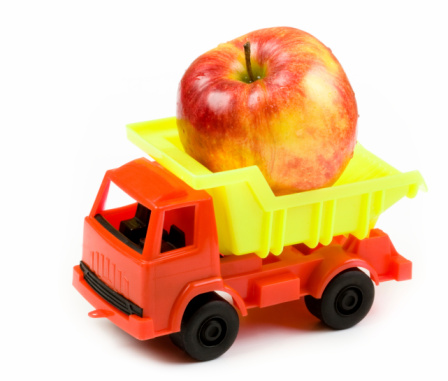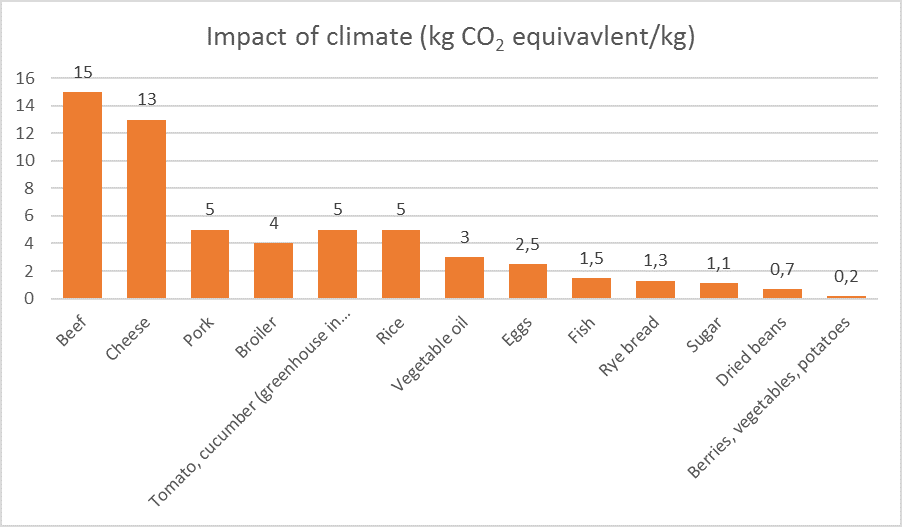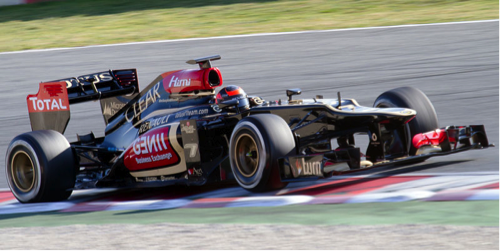|
Organic food is filling the shelves and praised like never before, but often it might have travelled a long way before reaching the shelves in the stores. The question I wanted answered was how big an impact the so called food miles (the distance food travels from farm to plate) have on environment. Quite a few studies have been made to conclude if organic or local food is better. For example, a Swedish researcher took a closer look at a typical Swedish breakfast (apple, bread, butter, cheese, coffee, cream, orange juice, sugar). His calculations showed that the distance the breakfast travelled before reaching the breakfast table was approximately one turn around the Earth. A similar calculation was done in Iowa, USA. There the research team concluded that to make one cartoon of strawberry yoghurt the ingredients travelled about 3 550 km. At that point the ice cream hadn’t even left the factory. These numbers, together with the fact that transportation does release a lot of greenhouse gases (especially air and road transport), displays a real problem for the environment. However, to know the environmental impact of food isn’t as easy as calculating food miles. Transportation system and, as with organic food, the process of making the food might have an even greater impact on the environment. For example, potatoes trucked from 100 miles away might have a higher environmental impact than potatoes shipped by rail from 1000 miles away. Still, if looking at the big picture, the food miles only makes up a small part of the total environmental impact of products. DeWeerdt suggests making a life-cycle analysis for food instead of just looking at the food miles. When looking at the production it is obvious that beef and dairy products have some of the highest environmental impacts (see table below). When put shortly, what you eat has a bigger impact than the food miles. Ida Smedlund References:Caputo, V. Nayga Jr, R.M. Scarpa R. 2013. Food miles or carbon emissions? Exploring labelling preference for food transport footprint with a stated choice study. In Australian Journal of Agricultural and Resource Economics, 57, pp. 465-482.
DeWeerdt, S. 2013. Is Local Food Better? In World Watch Magazine, Volume 22 No. 3. SYKE. Article: Climate-friendly food. SYKE, Aalto-yliopisto, YTK, Ilmatieteen laitos. Read: 19.10.2016. https://ilmasto-opas.fi/en/ilmastonmuutos/hillinta/-/artikkeli/ab196e68-c632-4bef-86f3-18b5ce91d655/ilmastomyotainen-ruoka.html%2017.10.2016 When you start thinking about car races, the first thing that comes to mind as an environmental engineer is the huge amount of money spent on them, and the serious environmental impacts they have. A large number of cars and personnel are transported from country to country to races, only to damage more of our valuable and precious environment. Not to mention the amount of people who also travel to watch the race… However, could there still be some greater meaning for this? Something that we as regular people could actually learn from Formula 1? My opinion is that there is. Most people do not know what KERS, or ERS, or other abbreviations mean. KERS is short for Kinetic Energy Recovery Systems, which was introduced to the sport in 2009. KERS works so that it harnesses the waste energy that is created during the braking. Rather than letting it escape as heat it is transformed into energy. In an F1 engine the energy is stored in a flywheel or in a battery. This provides an additional 60 kilowatts of power up to 6.67 seconds. For readers that do not follow F1, this is a huge amount of power. This innovation could soon be available to ordinary drivers, too. Volvo has tested adding KERS with a flywheel into regular road cars. The results show that in a four cylinder set up with KERS, the fuel consumption can be reduced by 25 percent when compared to a similar car with a six cylinder setup. In addition, the technique gives additional power of 60 kilowatts, which makes the four cylinder setup car accelerate like a six cylinder setup car. In 2014, a new system was taken into use in F1 and it is called ERS, Energy Recovery Systems. ERS consists of two energy recovery systems: Motor Generator Unit- Kinetic (MGU-K) and Motor Generator Unit- Heat (MGU-H). In addition, Energy Store (ES) and control electronics are part of ERS. MGU-K works in similar way to KERS, by transforming kinetic energy into electricity. MGU- H then transforms the heat energy from exhaust gases into electrical energy. This energy can then be used for MGU- K or stored in the energy store. This means an addition of approximately 120 kilowatts for 33 seconds, when compared to 60 kilowatts for 6,67 seconds.
Moreover, the new regulations for 2014 in F1 have a 100 kilogram limit for fuel per race, when before 160 kilograms of fuel could be used. This means that more testing and optimising is needed to get the maximal benefit from the limited amount of fuel. Doesn’t this sound very energy efficient and energy saving? The hybrid techniques of energy saving and energy efficiency of the fuels can also be transferred into our own road cars; or at least the information gotten can be developed for further use. Therefore, making the formula cars faster and more efficient does not always mean waste of money and environmental degradation. For more information, check the references. Sanni Joensuu References: http://www.tekniikkatalous.fi/autot/uusin+hybriditekniikka+valloittaa+formula+1n+ndash++teho+tuplaantuu+vaikutusaika+5kertaistuu/a963128 http://www.tekniikkatalous.fi/innovaatiot/25++saasto+bensankulutuksessa++volvo+testasi+formuloista+tuttua+kersjarjestelmaa+henkiloautoissa/a899268 http://www.formula1.com/inside_f1/rules_and_regulations/technical_regulations/ http://www.williamsf1.com/AdvancedEngineering/Media/Videos/Williams-Hybrid-Power-Flywheel---How-it-Works/ The picture is borrowed from here: http://fi.wikipedia.org/wiki/Kimi_Räikkönen |
Want to be an author?Write for us and we will publish your writing right here on our blog! It can be about anything related to environmental engineering Archives
May 2019
Categories
All
|



 RSS Feed
RSS Feed
